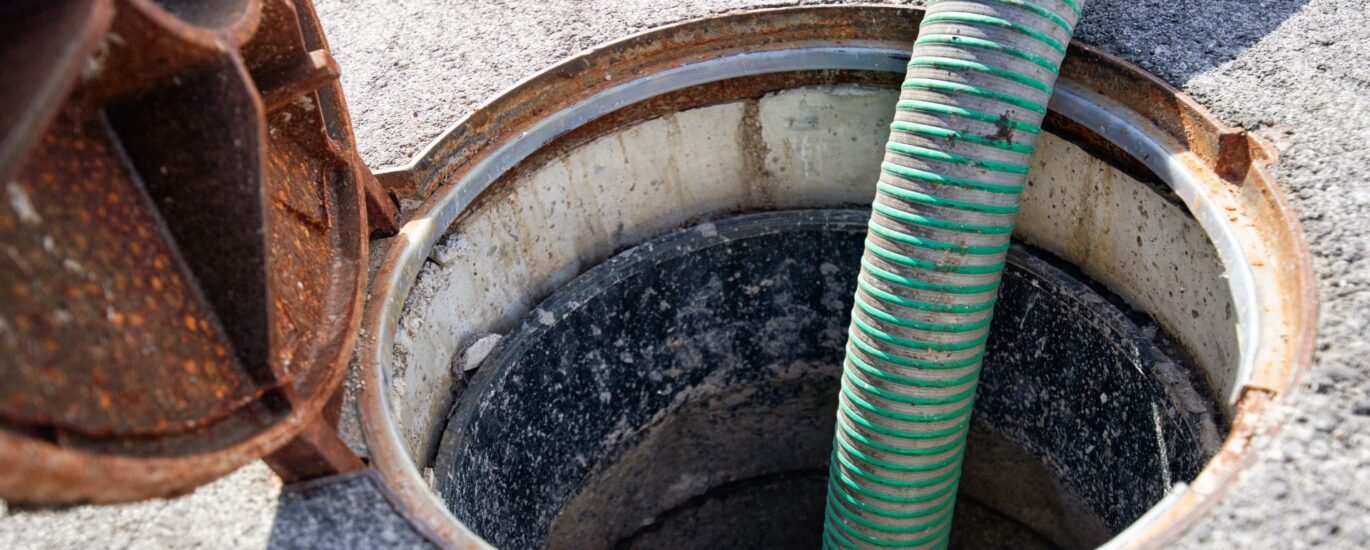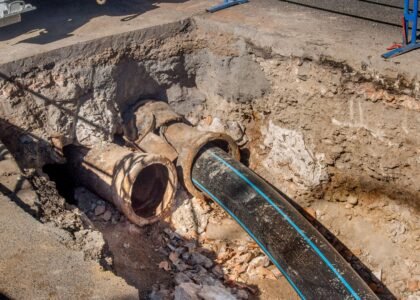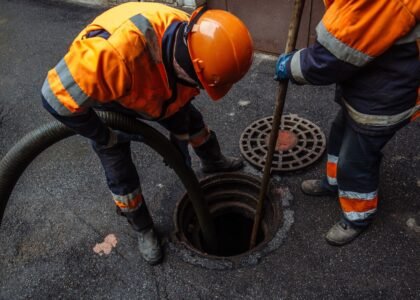Introduction
A damaged sewer line isn’t always obvious—until the signs become serious. In this post, we’ll walk through the symptoms, causes, and replacement options for sewer lines. If you suspect trouble, don’t wait—read on and see when it’s time to act, and check out our related post on trenchless solutions for more detail.
Signs That Your Sewer Line May Need Replacement
It’s easy to mistake small plumbing issues for general clogs. But when the sewer line itself is failing, you’ll begin to see recurring, more serious symptoms:
- Frequent backups or overflows in multiple fixtures
- Foul sewer odors in your yard or inside
- Slow drains throughout the home (not just one sink)
- Gurgling noises in toilets or drains
- Lush patches of grass or soggy soil above the sewer path
- Root intrusion, cracked pipes, or visible collapse (if located)
If you notice one or more signs, it’s time to get a camera inspection or diagnosis.
Common Causes of Sewer Line Damage
Knowing what causes failure helps you spot risks early. Common culprits include:
- Tree roots
Roots seek moisture and nutrients. They can infiltrate pipes through joints, cracks, or gaps, slowly widening them and causing breaks. - Aging materials & corrosion
Older pipe materials like clay, cast iron, or galvanized steel degrade over time. Corrosion, rust, and wear lead to cracks and leaks. - Ground shifts & pressure
Earth movement, settling, or construction nearby can stress pipes, causing fractures or misalignment. - Clogs, sludge, and buildup
When grease, mineral scale, or solid waste accumulate, they add pressure or even erode pipe walls. - Poor installation or defects
Pipes laid improperly, with weak joints or wrong slope, may fail prematurely. - External damage
Excavation, heavy vehicles, or accidental digging can breach lines.
Replacement Options: Traditional vs. Trenchless Methods
Once replacement is deemed necessary, there are two main paths. Each has pros and cons:
Traditional Excavation
- How it works: Dig a trench along the path of the existing line, remove the damaged sections, install new pipe, and backfill.
- Pros: Straightforward, time-tested, good for heavily damaged or obstructed lines
- Cons: Disruption to landscaping, patios, driveways; higher restoration cost; longer job time
Trenchless Methods (when feasible)
- Pipe relining / Cured-in-place pipe (CIPP): A liner is inserted into the existing pipe and cured in place, forming a new pipe within the old one.
- Pipe bursting / Pipe replacement-in-place: The old pipe is broken apart and a new pipe is pulled through the same line.
- Pros: Minimal digging, faster, less disruption to your property
- Cons: Not always suitable if the existing line is severely collapsed or misaligned
Trenchless methods are becoming more common, especially in residential areas, because they reduce the surface damage and downtime.
How the Replacement Process Typically Works
To replace a sewer line (traditional or trenchless), the process often follows these steps:
- Inspection & diagnosis
Use a sewer camera to see the extent and location of the damage. - Plan & access
Identify entry/exit points; plan how to access the pipe without disturbing critical structures. - Prepare the line
Clean the existing sewer line — remove roots, sludge, debris, etc. - Replacement / relining / bursting
Perform the actual installation of new pipe or liner per method chosen. - Testing & verification
Test for leaks, slope, proper flow. Verify everything works before closing. - Backfill & restoration
Backfill trenches and restore landscaping, driveways, walkways, and pavements.
Cost Considerations & Factors
Replacement cost depends heavily on:
- Length and depth of the pipe
- Pipe material (PVC, HDPE, cast iron, etc.)
- Method chosen (trenchless is usually more expensive up front but saves restoration costs)
- Site conditions (rocky soil, obstructions, structures)
- Accessibility
- Local permits, inspection fees, and city requirements
To get a more accurate view, see our deeper dive on trenchless options in our second blog post (you’ll link to Blog 2). Also, when ready, you can reach out through our site’s contact page: https://plumbersmontereyca.com/#contactus
How to Decide When Replacement Is Better Than Repair
Sometimes repair is feasible, but:
- If more than ~50 % of the line is damaged
- If the line is severely misaligned or collapsed
- If recurring issues continue despite repairs
- If roots or defects span long segments
In these cases, replacement is more cost-effective in the long run. For borderline cases, pipe relining may suffice.
Preventative Tips to Protect Your Sewer Line
While aging and external factors can’t always be avoided, you can take steps to prolong your sewer line’s life:
- Avoid flushing or dumping grease, sanitary items, or solid debris
- Do regular drain cleaning and inspections
- Monitor trees and plantings near sewer paths
- Use root-control products when appropriate
- Address slow drains early
Final Thoughts & Call to Action
Understanding the signs and options for sewer line replacement helps you act before things get much worse. If you’re confident your system may need attention, dive into our blog about trenchless replacement methods next. These methods often offer a less disruptive, cost-efficient alternative.
When you’re ready to discuss your line replacement, contact us via https://plumbersmontereyca.com/#contactus or check our full service details including sewer line replacement methods at our sewer line replacement page.



